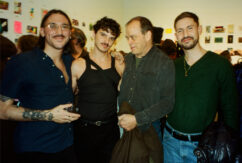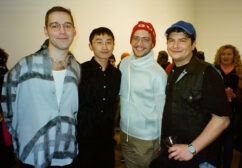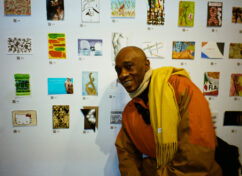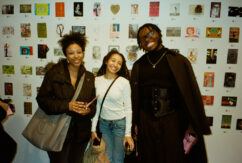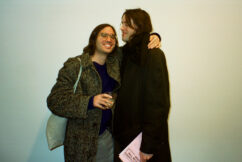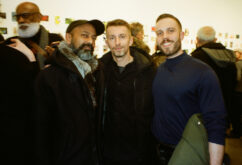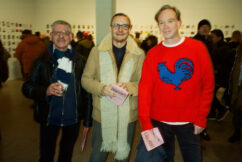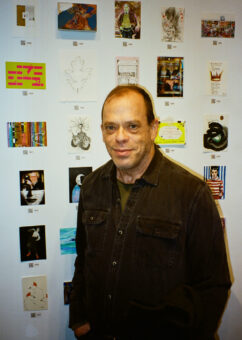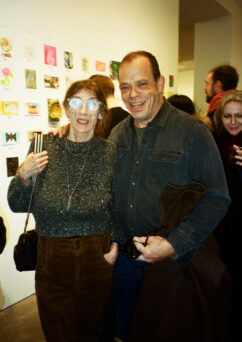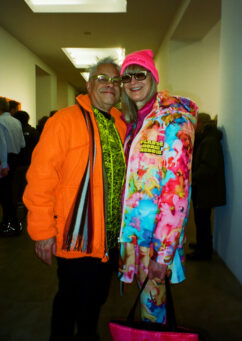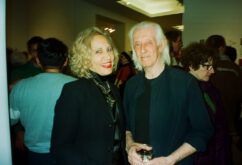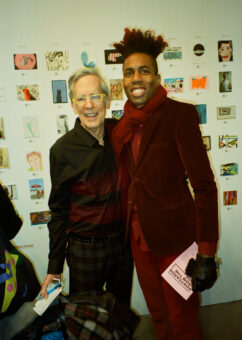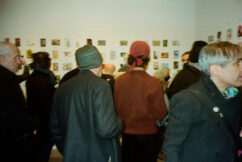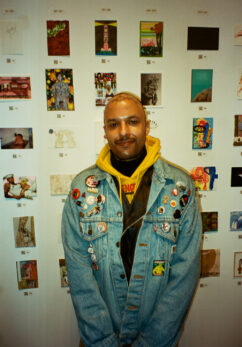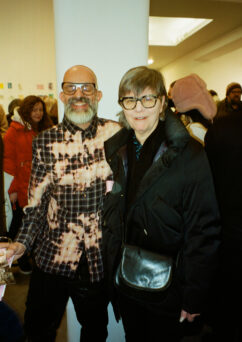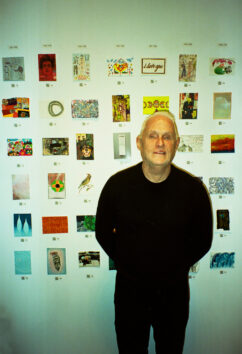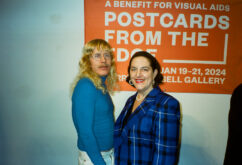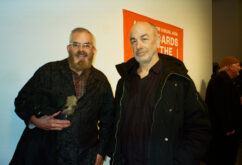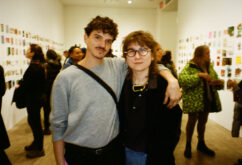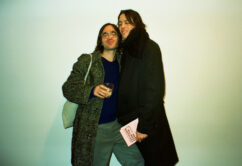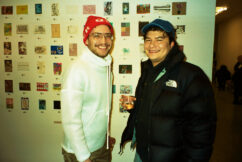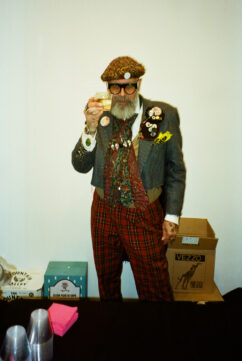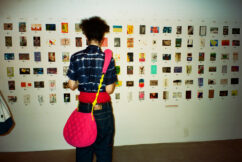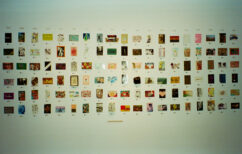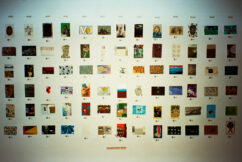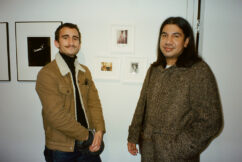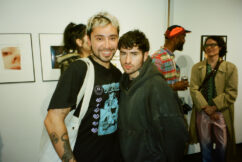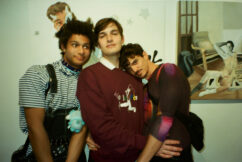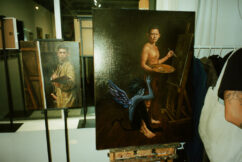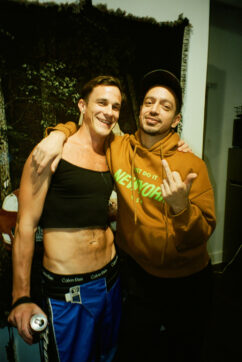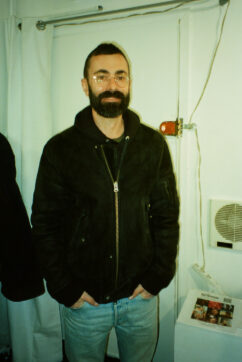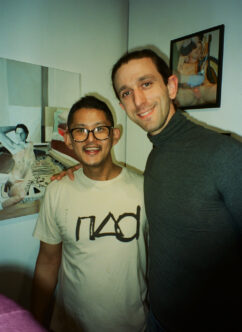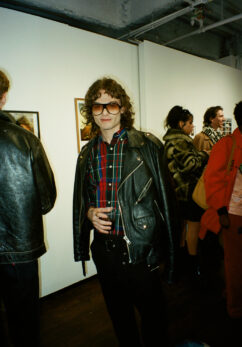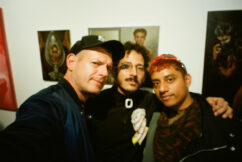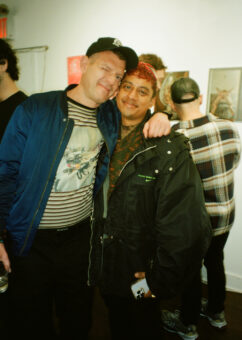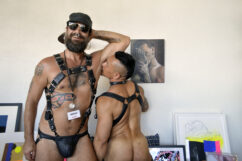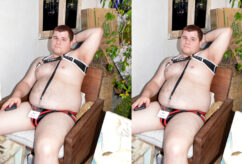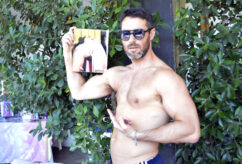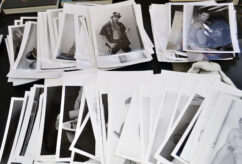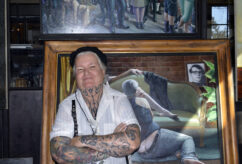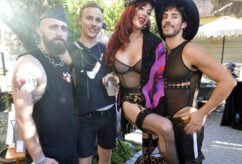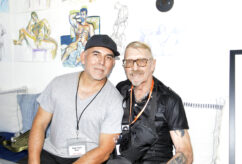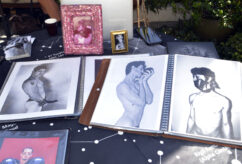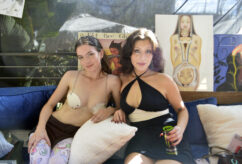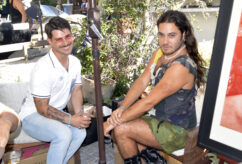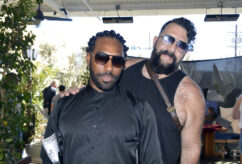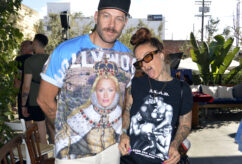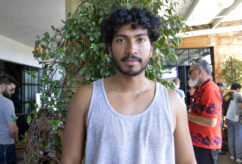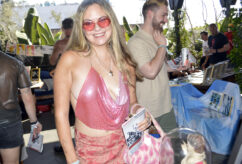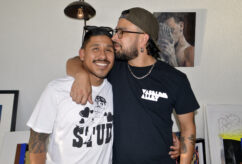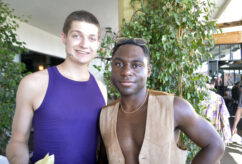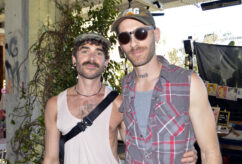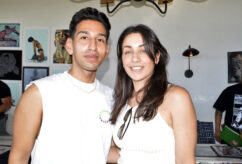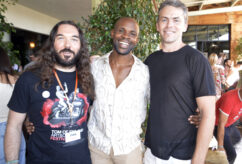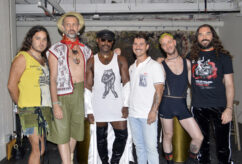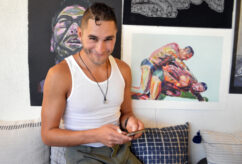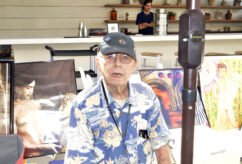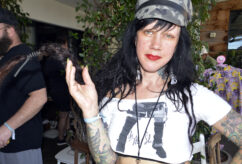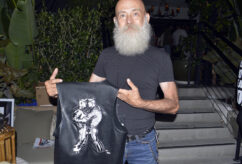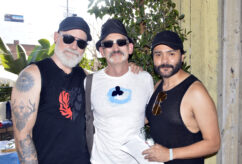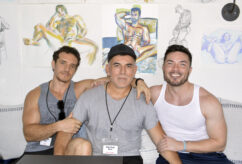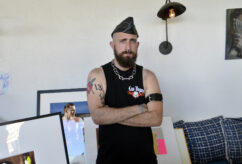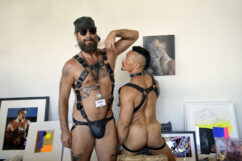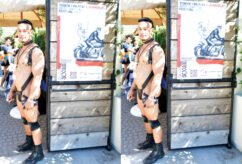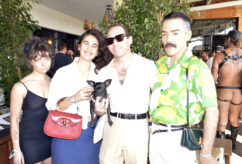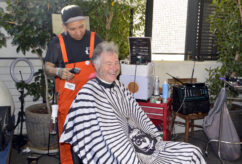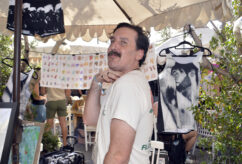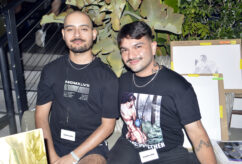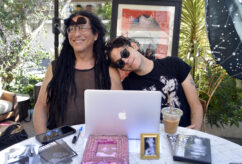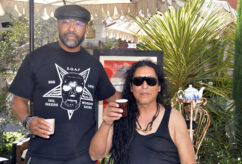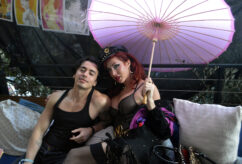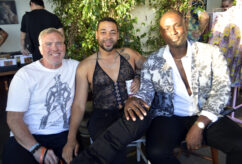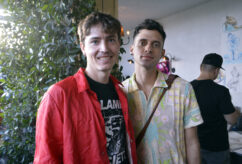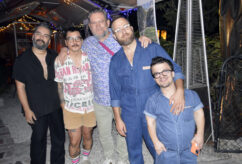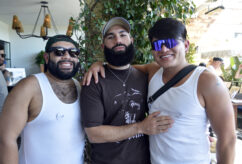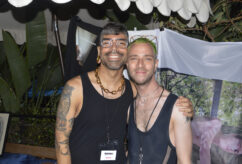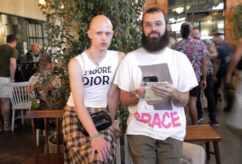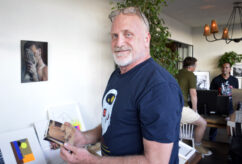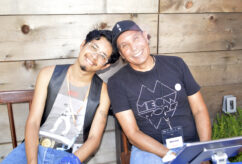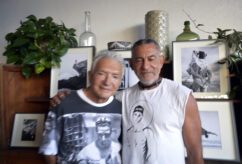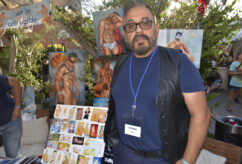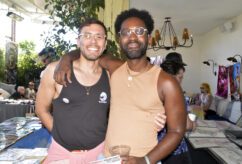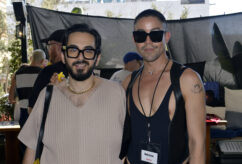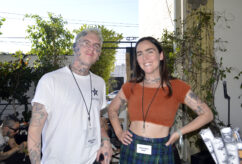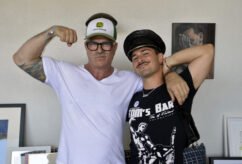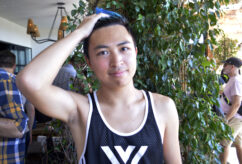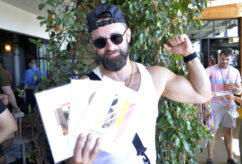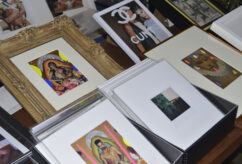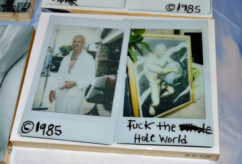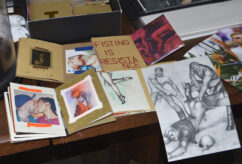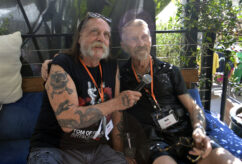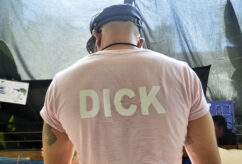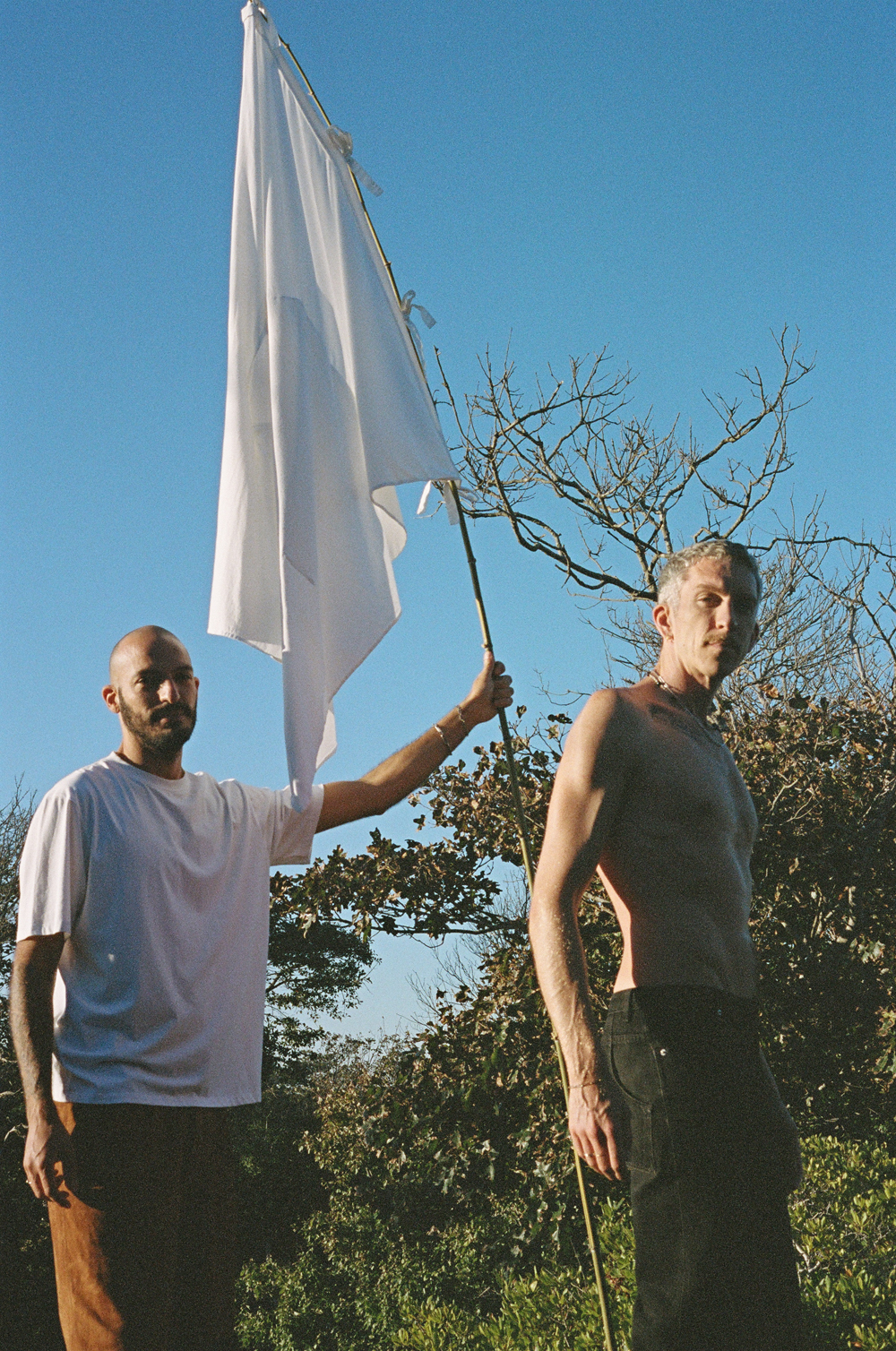Wednesday 01.31.24
Visual AIDS: The 26th Annual Postcards from the Edge benefit event
Scenes from the preview party at Berry Campbell Gallery.
Sunday 12.10.23
JUSTIN CHANCE
The artist makes incredible handmade quilts inspired by the feeling of being overwhelmed.
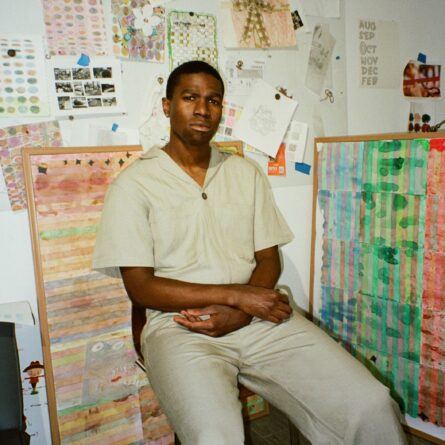
Artist Justin Chance’s reverence for writing is evident. Through double entendre and other jeu de mots, he develops titles that carefully amuse his audiences — his ecstatic charm nearly puckish in its ability to complicate as it elucidates. For his first solo exhibition at Tara Downs gallery in New York, he began with the title, Live, a play on the homonym /liv/ the verb and /laiv/ the adjective, eliciting a dual meaning — both aliveness and its eventual mortality, and the immediacy of the moment — existence and instance. While the works in the show span two calendars commemorating the twin towers (along with a third calendar created by Chance including dates of personal loss for the artist) and an image of the late Jenni Crain, a close friend of the artist who passed in 2021, much of the exhibition’s focus is a series of quilts, each evoking a state or concept related to being overloaded and overwhelmed. Quilts like Green Screen (2022–23) and Black Box (2023) are handspun effigies of media culture, signaling intrinsic transmutation and postmortem surveillance. Other titles, like Depression (2022) and Aloha Sadness (2022-23) point with a waggish finesse to melancholia and desperate isolation. Both overtly and covertly, the exhibition examines loss — of people, of place, of time, of image.
“Green Screen” (2023).
“Textbook” (2022-2023).
“Aloha Sadness” (2022-2023).
“Depression” (2022).
Chance uses a wet felting method to make a surface from scratch by soaping, stretching, and then rolling wool with bamboo mats. …

Saturday 10.14.23
ADAM LIAM ROSE
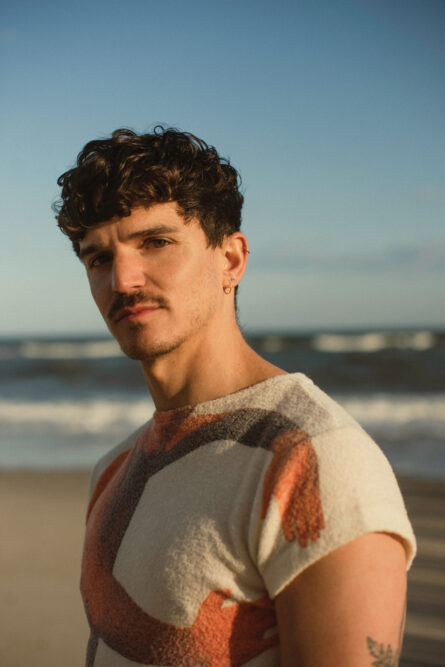
As a baby in Israel during the Gulf War, artist Adam Liam Rose experienced a climate of anxiety with the fear that Saddam Hussein was going to bomb the region. He remembers a box of family photos that included images of his parents wearing government-issued gas masks and his tiny, cherubic self crying inside a crib enclosed with a plastic bubble featuring a glove insert to nurture an infant in the event of a quarantine. They found out later it would probably have done nothing to protect a baby from the disastrous effects of a chemical weapon attack. Instead, these gestures on the part of the Israeli state were likely false reassurance that the public was being considered and protected. Rose can point to numerous examples of Israel’s attempt to surreptitiously manipulate minds and fortify land — including Route 443, an intercity road stretching through the West Bank to connect Jerusalem and Tel Aviv that is stealthily secured with anti-sniper walls.
The artist moved to the United States just after 9/11 during the Iraq War, coming of age in a time when propaganda promised safety and comfort to those who embraced nationalism in defense of an amorphous “freedom.” It wasn’t until attending college that he gained a sense of lucidity, watching documentaries and propaganda videos on YouTube for research. At the School of the Art Institute of Chicago and then Columbia University, he began making and installing large-scale sculptures often with video components, structures that riffed on the menacing and mothering panopticon and other forms of safety architecture. …

Saturday 08.26.23
Christeene at Pippa Garner
Pippa Garner's $ELL YOUR $ELF is on view until October 29, 2023.
Tuesday 06.13.23
FOLSOM STREET FAIR SF 2022
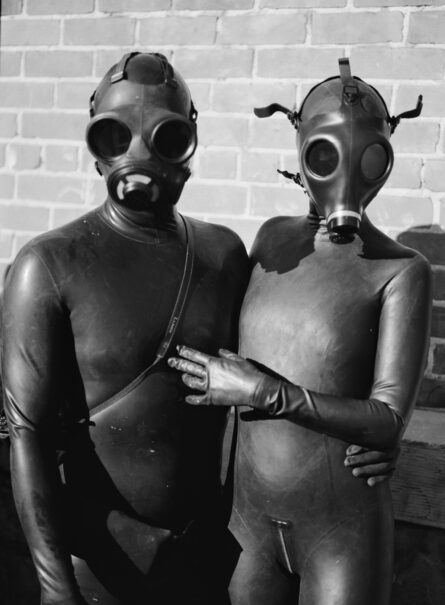
San Francisco’s Folsom Street Fair is the world’s largest celebration of BDSM and leather subcultures. It takes place on Folsom Street between 8th and 13th, in the San Francisco neighborhood named for being South of Market, SoMa. The first event was held in 1984 in part to protest the redevelopment of SoMa which supported a thriving LGBT community, including many leather bars. The event was also conceived as a fundraiser, the donations taken at the entrance gates going to local and national charity groups.
My Folsom project began when Visual AIDS, a nonprofit supporting HIV-positive artists, asked me to set up a pop-up photo booth at New York City’s Folsom Street East in 2015. It was enlightening. I met and photographed so many incredible fetish enthusiasts in their gear. That experience inspired me to keep photographing and to explore the other iterations of Folsom, Folsom Street East, and World Folsom in Berlin.
My adrenaline always starts pumping when I near the entrance to Folsom and see all the fetish enthusiasts pouring in alongside me. I love to witness the BDSM and leather communities out in broad daylight, smiling, laughing, and flogging. The camaraderie between spectators and strangers is infectious. From Barbie to gas mask fetishists, and a whole spectrum of exhibitionism in between, it’s all there, and that’s why I love Folsom so much. By documenting Folsom, I’ve been able to explore my number one fetish, photographing people embracing their deviant side. I’ll definitely be back next year with my cameras in tow. …

Friday 05.26.23
JORDAN RAMSEY ISMAIEL
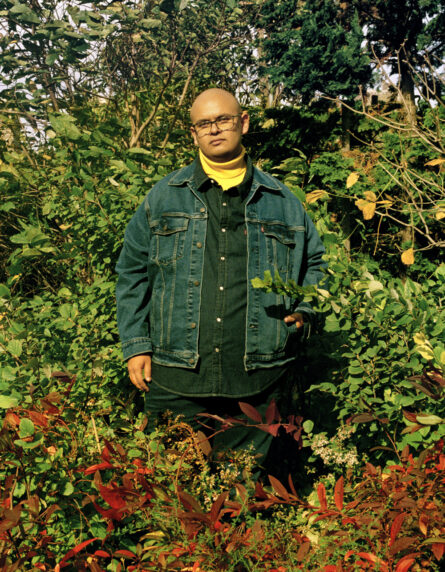
A calm self-confrontation allows artist Jordan Ramsey Ismaiel to wonder at their own paintings, “Who can I be for myself? How much support can I get from a relationship with me?” They see the work as a mirror reflecting possibility — a way of imagining subsistent selfhood. From the outside of this triangulation, the work might seem to reify the evergreen queer themes of self-plurality or the binary, or even notions of doubled life — twins, clones, doppelgängers. But it isn’t similitude or arrogance that drives the artist’s process, but a perennial pursuit of self-love and self-care, without the customary deprecation of a comedic apology.
The poses for his figures are mostly developed from memories with friends and family, recasting themself in the position of the loved one. Ismaiel begins by making photomontages using Photoshop — staging two selves in quick digitally-painted plans for landscapes or splashy patterned backgrounds of flowers blooming and blossoming. From high noon to half moon, Ismaiel’s landscapes are vast expanses in dreamy Technicolor — perhaps informed by their time spent in the Great Plains of Iowa and Nebraska. In effect, the portraits feel soft but powerful, like a much-needed warm hug.
“And the track plays again and again” (2021).
“Wasteland Love” (2021).
“These little bits of paradise” (2021).
“Let’s stop here for some time” (2021).
“Hold your breath while we walk through this corn maze” (2021).
“When the curtains close on this tragic act” (2020).
SWEATER AND PANTS BY INSERCH, JACKET BY LEVI’S. …

Tuesday 03.21.23
Oscar yi Hou
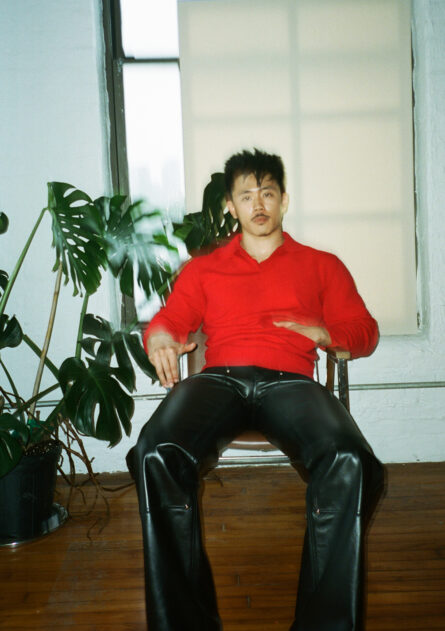
A show of new paintings by Oscar yi Hou is on view at the Brooklyn Museum for nearly a year through mid-September of 2023. East of the Sun, West of the Moon, the exhibition’s title, refers to a poem by the artist that riffs on the feeling of in-betweenness and the innumerable stereotypes of East Asian people in Western cultural imagination. In yi Hou’s brushy, expressive portraits, the artist costumes himself and friends as a spectrum of characters — from Bruce Lee’s role of Kato on the 1960s television show The Green Hornet and anime Dragon Ball’s Son Goku to Old Hollywood “geisha-girls” and Spaghetti Western cowboys. He then builds painterly frameworks around his figures, centering them against a spare architectural scene. The compositions, reminiscent of symbolic quincunxes and coronas around saints, are then embellished with an intersectional mix of floating icons and symbols (including references to Japanese and Chinese artworks from the Brooklyn Museum’s collection.) These marginalia feature creatures like butterflies and cranes, sometimes swooping to overlap Chinese calligraphy or graffiti tags, motifs like Internet symbols and Taoist taijitu, stars from flags or sheriff’s badges. The illuminations contextualize their sitters as much as they obfuscate them, pointing to the rich complexity of the painter’s relationship with each subject and the ways in which constructed, long-standing identities may be adopted and rebuffed.
The show developed from a detailed 3000-word proposal yi Hou wrote, gathering many of his ideas from previous exhibitions and emphasizing the importance of pairing text with image, a central touchstone in understanding the re-appropriation at play in his work. …

Friday 03.10.23
LINUS BORGO
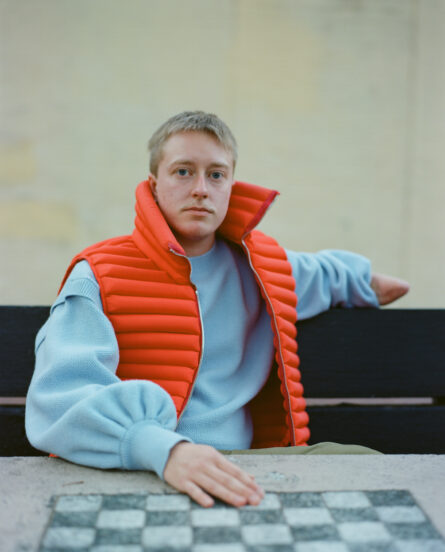
Artist Linus Borgo is no stranger to periods of incubated change — over a decade ago he was involved in an electrical accident, resulting in the amputation of his left forearm and hand. In the hospital, he remembers the feeling of being a mere body, passed from one doctor to the next. Now, years later, he paints from his home and studio in Brooklyn, dissolving and reconstituting memories into potent compositions. These heightened visions and flashbacks exist somewhere between the corporeal and metaphysical, between dream and nightmare.
The painter credits his dance background and artists of the Italian Renaissance as having paved much of the territory on which he treads. “There’s a lot of choreography in paintings of the Renaissance,” he laughs, “and all those muscular bodies painted in the Sistine Chapel — many people were there to have a religious experience, I was just turned on.” Using thickly lain oil paint, Borgo extends the humanist traditions of Renaissance painting with an elegant attention to form and by grounding the work in his own personal experience.
“Sometimes I worry I am making trauma porn,” Borgo confesses. Memory is reductive; in our minds it flows, without bearing the broad monotony of time and place, charged by the lingering effects of elation and suffering that militate even our smallest experiences. As many of Borgo’s paintings are laden with the anguish and upheaval he once felt, they also might empower the viewer, reassuring them that the passing of time, no matter how slow it may feel, will inevitably change all circumstances. …

Friday 02.17.23
Larry Stanton: The Artist who focused on Life as the Aids Crisis took hold of his Community
The Acne Studios Collaboration that aims to celebrate Stanton's Vibrant Legacy.
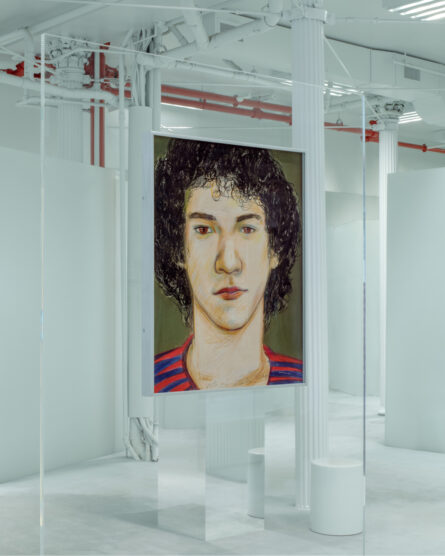
The memory of the artist Larry Stanton lives on through his gestural drawings, most notably his candid portraits of young men. Their boyish charm — emblematic of his own — is frozen in time, leaving minds to wonder what might have been had he not died at the tender age of 37 from AIDS related complications. In the five years before his death, he made some 500 drawings, providing a glimpse of New York City’s gay men in the late 1970s and early 1980s. In their fleshy flatness, his portraits are hopeful and romantic, focused on the vitality of the moment he made them.
Stanton was born in 1947 on a rural farm in Delhi, New York, and he moved to Manhattan when he was only 18 years old. During his life, he was championed by artists and writers such as David Hockney, Ellsworth Kelly, Henry Geldzahler, and William Burroughs, but he had very few public exhibitions and sold only seven paintings before his untimely passing. He spent much of his time in the Greenwich Village, always keeping a small sketchbook to jot down ideas and draw strangers he met at his favorite coffee shop. A collector of people and his memories of them, his studio there became a hub for artistic types and their admirers — the space full of canvases, photographs, art books, and stuffed animals that had been torn apart by his cat. By night, Stanton’s hook-ups became the subjects for many of his signature portraits on paper, with corresponding phone numbers often scribbled onto the other side. …

